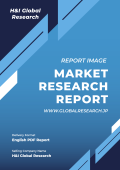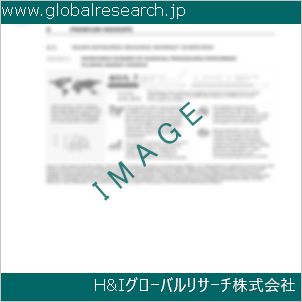Table of Contents
1 Industry Overview of Glycerin
1.1 Definition and Specifications of Glycerin
1.1.1 Definition of Glycerin
1.1.2 Specifications of Glycerin
1.2 Classification of Glycerin
1.3 Applications of Glycerin
1.3.1 Nuclear Application
1.3.2 Non-Nuclear Application
1.4 Industry Chain Structure of Glycerin
1.5 Industry Overview and Major Regions Status of Glycerin
1.5.1 Industry Overview of Glycerin
1.5.2 Global Major Regions Status of Glycerin
1.6 Industry Policy Analysis of Glycerin
1.7 Industry News Analysis of Glycerin
2 Manufacturing Cost Structure Analysis of Glycerin
2.1 Raw Material Suppliers and Price Analysis of Glycerin
2.2 Equipment Suppliers and Price Analysis of Glycerin
2.3 Labor Cost Analysis of Glycerin
2.4 Other Costs Analysis of Glycerin
2.5 Manufacturing Cost Structure Analysis of Glycerin
2.6 Manufacturing Process Analysis of Glycerin
3 Technical Data and Manufacturing Plants Analysis of Glycerin
3.1 Capacity and Commercial Production Date of Global Glycerin Major Manufacturers in 2023
3.2 Manufacturing Plants Distribution of Global Glycerin Major Manufacturers in 2023
3.3 R&D Status and Technology Source of Global Glycerin Major Manufacturers in 2023
3.4 Raw Materials Sources Analysis of Global Glycerin Major Manufacturers in 2023
4 Capacity, Production and Revenue Analysis of Glycerin by Regions, Types and Manufacturers
4.1 Global Capacity, Production and Revenue of Glycerin by Regions 2019-2024
4.2 Global and Major Regions Capacity, Production, Revenue and Growth Rate of Glycerin 2019-2024
4.3 Global Capacity, Production and Revenue of Glycerin by Types 2019-2024
4.4 Global Capacity, Production and Revenue of Glycerin by Manufacturers 2019-2024
5 Price, Cost, Gross and Gross Margin Analysis of Glycerin by Regions, Types and Manufacturers
5.1 Price, Cost, Gross and Gross Margin Analysis of Glycerin by Regions 2019-2024
5.2 Price, Cost, Gross and Gross Margin Analysis of Glycerin by Types 2019-2024
5.3 Price, Cost, Gross and Gross Margin Analysis of Glycerin by Manufacturers 2019-2024
6 Consumption Volume, Consumption Value and Sale Price Analysis of Glycerin by Regions, Types and Applications
6.1 Global Consumption Volume and Consumption Value of Glycerin by Regions 2019-2024
6.2 Global and Major Regions Consumption Volume, Consumption Value and Growth Rate of Glycerin 2019-2024
6.3 Global Consumption Volume and Consumption Value of Glycerin by Types 2019-2024
6.4 Global Consumption Volume and Consumption Value of Glycerin by Applications 2019-2024
6.5 Sale Price of Glycerin by Regions 2019-2024
6.6 Sale Price of Glycerin by Types 2019-2024
6.7 Sale Price of Glycerin by Applications 2019-2024
6.8 Market Share Analysis of Glycerin by Different Sale Price Levels
7 Supply, Import, Export and Consumption Analysis of Glycerin
7.1 Supply, Consumption and Gap of Glycerin 2019-2024
7.2 Global Capacity, Production, Price, Cost, Revenue, Supply, Import, Export and Consumption of Glycerin 2019-2024
7.3 USA Capacity, Production, Price, Cost, Revenue, Supply, Import, Export and Consumption of Glycerin 2019-2024
7.4 EU Capacity, Production, Price, Cost, Revenue, Supply, Import, Export and Consumption of Glycerin 2019-2024
7.5 China Capacity, Production, Price, Cost, Revenue, Supply, Import, Export and Consumption of Glycerin 2019-2024
7.6 Japan Capacity, Production, Price, Cost, Revenue, Supply, Import, Export and Consumption of Glycerin 2019-2024
8 Major Manufacturers Analysis of Glycerin
8.1 Manufacturer One
8.1.1 Company Profile
8.1.2 Product Picture and Specifications
8.1.2.1 Type I
8.1.2.2 Type II
8.1.2.3 Type III
8.1.3 Capacity, Production, Price, Cost, Gross and Revenue
8.1.4 Contact Information
8.2 Manufacturer Two
8.2.1 Company Profile
8.2.2 Product Picture and Specifications
8.2.2.1 Type I
8.2.2.2 Type II
8.2.2.3 Type III
8.2.3 Capacity, Production, Price, Cost, Gross and Revenue
8.2.4 Contact Information
8.3 Manufacturer Three
8.3.1 Company Profile
8.3.2 Product Picture and Specifications
8.3.2.1 Type I
8.3.2.2 Type II
8.3.2.3 Type III
8.3.3 Capacity, Production, Price, Cost, Gross and Revenue
8.3.4 Contact Information
8.4 Manufacturer Four
8.4.1 Company Profile
8.4.2 Product Picture and Specifications
8.4.2.1 Type I
8.4.2.2 Type II
8.4.2.3 Type III
8.4.3 Capacity, Production, Price, Cost, Gross and Revenue
8.4.4 Contact Information
8.5 Manufacturer Five
8.5.1 Company Profile
8.5.2 Product Picture and Specifications
8.5.2.1 Type I
8.5.2.2 Type II
8.5.2.3 Type III
8.5.3 Capacity, Production, Price, Cost, Gross and Revenue
8.5.4 Contact Information
…
9 Marketing Trader or Distributor Analysis of Glycerin
9.1 Marketing Channels Status of Glycerin
9.2 Traders or Distributors with Contact Information of Glycerin by Regions
9.3 Ex-work Price, Channel Price and End Buyer Price Analysis of Glycerin
9.4 Regional Import, Export and Trade Analysis of Glycerin
10 Industry Chain Analysis of Glycerin
10.1 Upstream Major Raw Materials Suppliers Analysis of Glycerin
10.1.1 Major Raw Materials Suppliers with Contact Information Analysis of Glycerin
10.1.2 Major Raw Materials Suppliers with Supply Volume Analysis of Glycerin by Regions
10.2 Upstream Major Equipment Suppliers Analysis of Glycerin
10.2.1 Major Equipment Suppliers with Contact Information Analysis of Glycerin
10.2.2 Major Equipment Suppliers with Product Pictures Analysis of Glycerin by Regions
10.3 Downstream Major Consumers Analysis of Glycerin
10.3.1 Major Consumers with Contact Information Analysis of Glycerin
10.3.2 Major Consumers with Consumption Volume Analysis of Glycerin by Regions
10.4 Supply Chain Relationship Analysis of Glycerin
11 Development Trend of Analysis of Glycerin
11.1 Capacity, Production and Revenue Forecast of Glycerin by Regions and Types
11.1.1 Global Capacity, Production and Revenue of Glycerin by Regions 2024-2029
11.1.2 Global and Major Regions Capacity, Production, Revenue and Growth Rate of Glycerin 2024-2029
11.1.3 Global Capacity, Production and Revenue of Glycerin by Types 2024-2029
11.2 Consumption Volume and Consumption Value Forecast of Glycerin by Regions, Types and Applications
11.2.1 Global Consumption Volume and Consumption Value of Glycerin by Regions 2024-2029
11.2.2 Global and Major Regions Consumption Volume, Consumption Value and Growth Rate of Glycerin 2024-2029
11.2.3 Global Consumption Volume and Consumption Value of Glycerin by Types 2024-2029
11.2.4 Global Consumption Volume and Consumption Value of Glycerin by Applications 2024-2029
11.3 Supply, Import, Export and Consumption Forecast of Glycerin
11.3.1 Supply, Consumption and Gap of Glycerin 2024-2029
11.3.2 Global Capacity, Production, Price, Cost, Revenue, Supply, Import, Export and Consumption of Glycerin 2024-2029
11.3.3 USA Capacity, Production, Price, Cost, Revenue, Supply, Import, Export and Consumption of Glycerin 2024-2029
11.3.4 EU Capacity, Production, Price, Cost, Revenue, Supply, Import, Export and Consumption of Glycerin 2024-2029
11.3.5 China Capacity, Production, Price, Cost, Revenue, Supply, Import, Export and Consumption of Glycerin 2024-2029
11.3.6 Japan Capacity, Production, Price, Cost, Revenue, Supply, Import, Export and Consumption of Glycerin 2024-2029
12 New Project Investment Feasibility Analysis of Glycerin
12.1 New Project SWOT Analysis of Glycerin
12.2 New Project Investment Feasibility Analysis of Glycerin
13 Conclusion of the Global Glycerin (CAS 56-81-5) Industry 2024 Market Research Report
| ※参考情報 グリセリンは、化学式C3H8O3で示される三価のアルコールであり、CAS番号は56-81-5です。非常に多くの産業や用途で利用されている重要な化合物の一つです。以下では、グリセリンの定義、特徴、種類、用途、そして関連技術について詳しく述べます。 まず、グリセリンの定義について考えてみましょう。グリセリンは、脂肪酸と結合することでトリグリセリドを形成する構造的な基盤を持っているため、食品、化粧品、製薬産業など多岐にわたる分野で重要な役割を果たしています。グリセリンは無色の粘性液体であり、甘味を有し、水溶性が高い特徴があります。このため、さまざまな液体との混合が容易であり、優れた溶媒としても繰り返し利用されます。 次に、グリセリンの特徴についてご説明します。グリセリンは高い親水性と低い毒性を持っているため、食品や医薬品において安全に使用できる材料の一つです。また、保湿性にも優れています。これにより、化粧品類においては保湿剤として非常に人気があります。さらに、グリセリンは熱安定性が高く、広範な温度範囲で化学的に安定しています。この性質は、製品の保存や使用において重要な要素となります。 グリセリンにはいくつかの種類があります。一つは、天然由来のグリセリンです。これは動植物の脂肪や油から抽出されるもので、主に食品や化粧品に用いられています。もう一つは、合成グリセリンであり、石油化学産業から得られます。合成グリセリンは、工業用途や医薬品の製造において広く使用されています。どちらの種類も、用途によって使い分けられていますが、特にエコロジーの観点からは天然由来のものが好まれる傾向にあります。 用途については、多岐にわたります。食品業界では、グリセリンは保湿剤や甘味料、乳化剤として使われます。様々な飲料やお菓子に使用されることで、風味を増強する役目を果たしています。化粧品業界では、保湿クリーム、シャワージェル、リップバームなどに使用されることが多く、その保湿効果が高く評価されています。医薬品分野においても、グリセリンは軟膏やシロップの基剤として重要です。この他にも、グリセリンはバイオ燃料の生産や、プラスチックや合成繊維の製造にも使用されています。 関連技術に関しては、グリセリンの生産プロセスにおいて、スチルリグルース(生成物分離)や脱水技術などが重要となります。特に、バイオディーゼルの生産過程で生成されるグリセリンは、廃棄物の再利用の観点からも注目されています。最近では、持続可能な製造方法として、再生可能資源を利用したグリセリンの製造が進められています。これにより、環境負荷の低減が期待されており、エコプロダクトとしての側面も持つことが重要視されています。 グリセリンは、その特性から非常に多様な用途に利用されるだけでなく、従来の用途にとどまらず新たなユーザー層や用途の開発にも寄与しています。したがって、グリセリンは化学、食品、化粧品、医薬品など、幅広い産業分野で重要な物質であり続けることでしょう。今後も技術の進歩により、より効率的で持続可能な生産方法が開発され、新たな応用が見出されることが期待されています。このように、グリセリンは現代社会において欠かせない化合物として、今後もその重要性が増すと考えられます。 |
❖ 免責事項 ❖
http://www.globalresearch.jp/disclaimer












